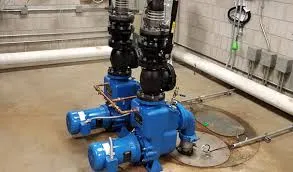English
- Afrikaans
- Albanian
- Amharic
- Arabic
- Armenian
- Azerbaijani
- Basque
- Belarusian
- Bengali
- Bosnian
- Bulgarian
- Catalan
- Cebuano
- Corsican
- Croatian
- Czech
- Danish
- Dutch
- English
- Esperanto
- Estonian
- Finnish
- French
- Frisian
- Galician
- Georgian
- German
- Greek
- Gujarati
- Haitian Creole
- hausa
- hawaiian
- Hebrew
- Hindi
- Miao
- Hungarian
- Icelandic
- igbo
- Indonesian
- irish
- Italian
- Japanese
- Javanese
- Kannada
- kazakh
- Khmer
- Rwandese
- Korean
- Kurdish
- Kyrgyz
- Lao
- Latin
- Latvian
- Lithuanian
- Luxembourgish
- Macedonian
- Malgashi
- Malay
- Malayalam
- Maltese
- Maori
- Marathi
- Mongolian
- Myanmar
- Nepali
- Norwegian
- Norwegian
- Occitan
- Pashto
- Persian
- Polish
- Portuguese
- Punjabi
- Romanian
- Russian
- Samoan
- Scottish Gaelic
- Serbian
- Sesotho
- Shona
- Sindhi
- Sinhala
- Slovak
- Slovenian
- Somali
- Spanish
- Sundanese
- Swahili
- Swedish
- Tagalog
- Tajik
- Tamil
- Tatar
- Telugu
- Thai
- Turkish
- Turkmen
- Ukrainian
- Urdu
- Uighur
- Uzbek
- Vietnamese
- Welsh
- Bantu
- Yiddish
- Yoruba
- Zulu
Telephone: +86 13120555503
Email: frank@cypump.com
Nov . 10, 2024 04:28 Back to list
Efficient Pumping Solutions for Slurry Handling and Transport Systems
Understanding Slurry Pumps An Essential Component in many Industries
Slurry pumps play a crucial role in a variety of industries, including mining, construction, and wastewater management. These specialized pumps are designed to handle the transportation of slurries, which are mixtures of solids and liquids. The ability to efficiently move these mixtures is vital for many industrial processes, making the understanding of slurry pumps key to operational success.
What is a Slurry?
Before diving into slurry pumps, it’s essential to clarify what a slurry is. A slurry consists of fine solids suspended in a liquid, typically water. Common examples include mud, cement, and various mineral mixtures. The characteristics of slurries can vary significantly, affecting their viscosity, density, and the size of the solid particles involved. This variability necessitates specialized pumping solutions to handle the diverse range of slurries encountered in different industries.
How Slurry Pumps Work
Slurry pumps are engineered to handle the challenges posed by abrasive and viscous materials. Traditional pumps may fail when exposed to the harsh conditions created by slurries, leading to increased maintenance costs and downtime. Slurry pumps, on the other hand, are built with robust materials and designs that mitigate wear and tear.
The functioning principle of slurry pumps typically involves either centrifugal or positive displacement mechanisms. Centrifugal slurry pumps use rotational energy to move the slurry, while positive displacement pumps push the liquid into a designated area by trapping a fixed amount of slurry and forcing it out. Each type has its unique advantages depending on the specific application.
Key Features of Slurry Pumps
1. Material Construction Slurry pumps are often constructed from wear-resistant materials such as high chrome alloys or elastomers to prevent erosion caused by the transported solids. This makes them suitable for handling abrasive materials.
pump for slurry

2. Enhanced Sealing Mechanisms Given the fluid dynamics involved, slurry pumps incorporate advanced sealing technologies to prevent leakage and contamination, ensuring a longer operational life.
3. Variable Speed Options Many modern slurry pumps can operate at variable speeds, allowing users to adjust flow rates according to the requirements of their specific processes.
4. Self-Priming Capabilities Some slurry pumps are equipped with self-priming features, which eliminate the need for manual priming and reduce downtime.
Applications of Slurry Pumps
The use of slurry pumps spans multiple sectors. In the mining industry, they are essential for transporting ore slurries to processing facilities. In construction, slurry pumps facilitate the handling of concrete mixes and digging fluids. Water treatment plants utilize these pumps for moving sludge during the purification processes, highlighting their versatility and importance in maintaining efficient plant operations.
Conclusion
The effectiveness of slurry pumps in handling complex mixtures of solids and liquids cannot be overstated. By ensuring that these systems operate efficiently, industries can minimize downtime and reduce maintenance costs while maximizing productivity. Whether it’s in a mine extracting valuable resources or a construction site pouring concrete, slurry pumps are vital in transitioning semi-solid materials swiftly and effectively.
In summary, understanding and choosing the proper slurry pump is crucial for anyone involved in industries that rely on the movement of slurries. With advancements in technology, slurry pumps are becoming increasingly efficient and reliable, making them indispensable in optimizing industrial processes. As industries continue to evolve, the role of slurry pumps will undoubtedly remain critical, ensuring smooth operations across various applications.
-
Horizontal Split Case Pump with GPT-4 Turbo | High Efficiency
NewsAug.01,2025
-
ISG Series Pipeline Pump - Chi Yuan Pumps | High Efficiency, Durable Design
NewsAug.01,2025
-
Advanced Flue Gas Desulfurization Pump with GPT-4 Turbo | Durable & Efficient
NewsJul.31,2025
-
ISG Series Vertical Pipeline Pump - Chi Yuan Pumps | Advanced Hydraulic Design&Durable Construction
NewsJul.31,2025
-
ISG Series Vertical Pipeline Pump - Chi Yuan Pumps | Energy Efficient & Low Noise
NewsJul.31,2025
-
pipeline pump - Chi Yuan Pumps Co., LTD.|High Efficiency&Low Noise
NewsJul.31,2025










